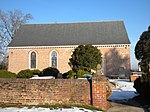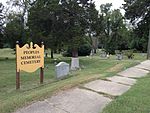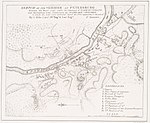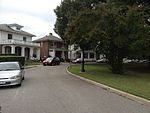Blandford Cemetery

Blandford Cemetery is a historic cemetery located in Petersburg, Virginia. Although in recent years it has attained some notoriety for its large collection of more than 30,000 Confederate graves, it contains remains of people of all classes and races as well as veterans of every American war. It holds the largest mass grave of 30,000 Confederates killed in the Siege of Petersburg (1864–65) and other battles during the American Civil War. Although only 3,700 names of the interred are known, it was listed on the National Register of Historic Places in 1992, in part through the efforts of Charlotte Irving, first president of the Historic Blandford Cemetery Foundation. In addition to this cemetery's historic African American section discussed below, it is located adjacent to the People's Memorial Cemetery, a historic African-American cemetery, and small cemeteries containing additional dead from the lengthy Siege of Petersburg and Battle of the Crater in 1864.Historic Blandford Church also adjoins the cemetery. Although deconsecrated for more than a century, it features a Confederate memorial that features a full set of windows designed by Tiffany studios.
Excerpt from the Wikipedia article Blandford Cemetery (License: CC BY-SA 3.0, Authors, Images).Blandford Cemetery
South Crater Road, Petersburg
Geographical coordinates (GPS) Address Nearby Places Show on map
Geographical coordinates (GPS)
| Latitude | Longitude |
|---|---|
| N 37.225833333333 ° | E -77.380555555556 ° |
Address
South Crater Road 319
23803 Petersburg
Virginia, United States
Open on Google Maps









